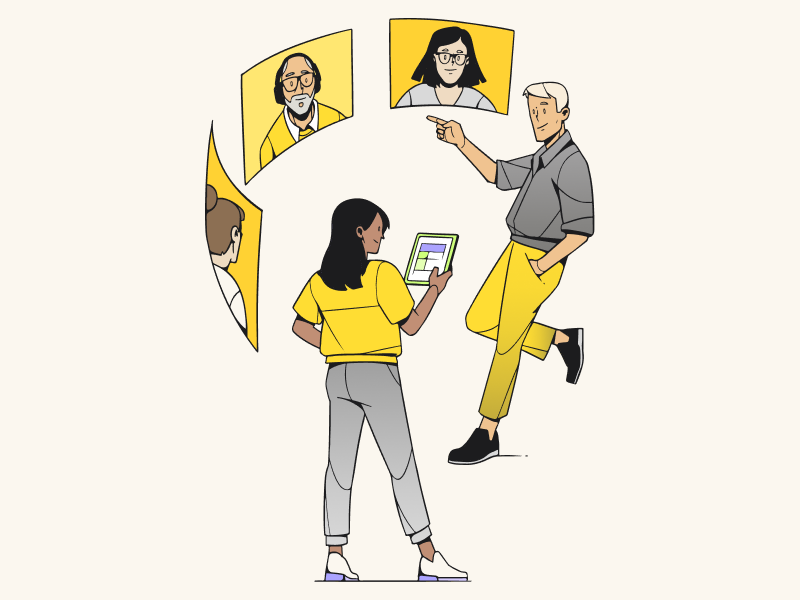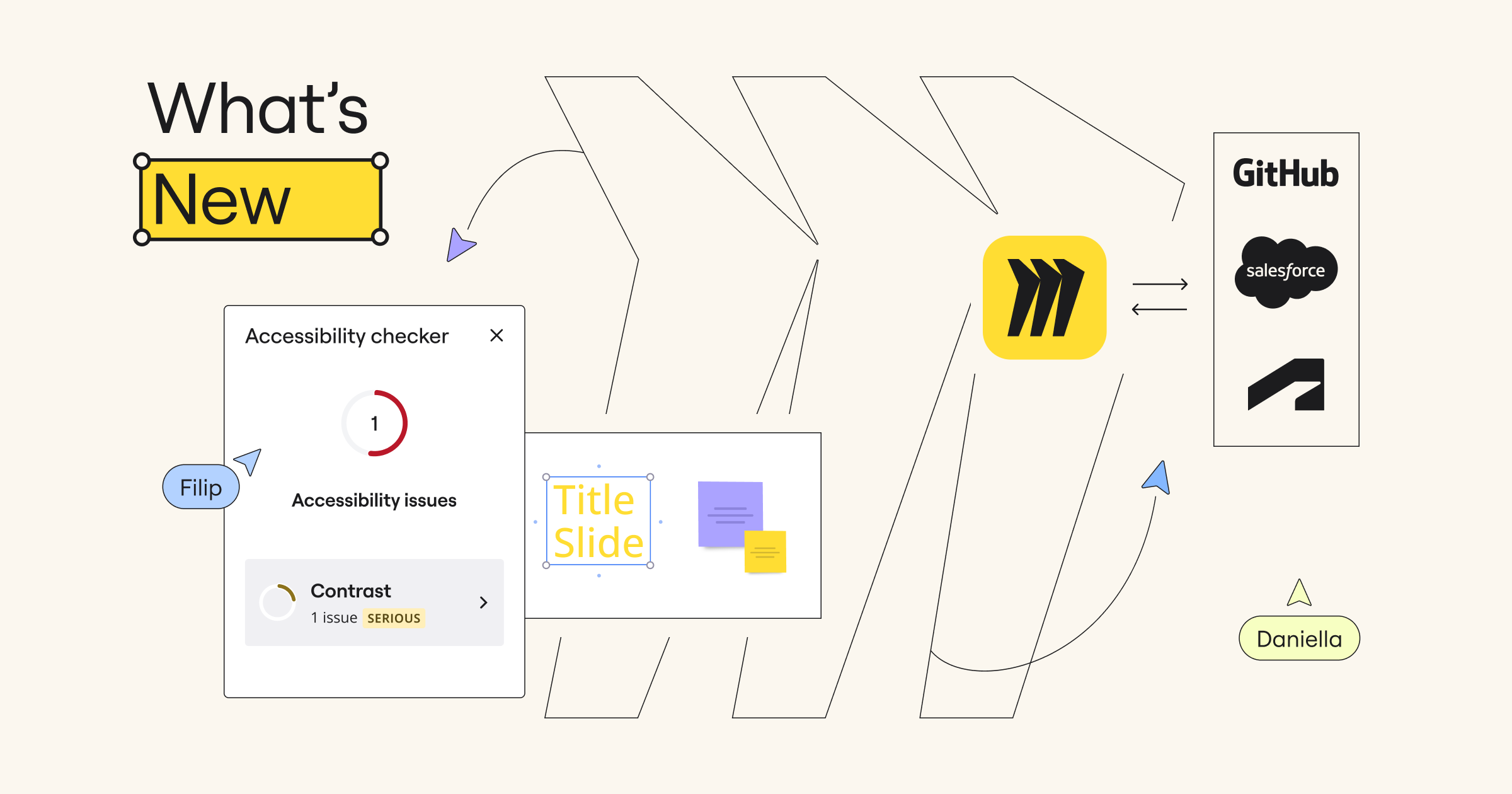Hybrid collaboration is complex. It’s not just about “in the office” or “not in the office” — it’s also about leadership, connection, creativity, and the technology that enables your teams to adapt.
Over 77% of companies have adopted a hybrid work model, but how can executive leadership optimize it for their teams? Here’s some of the lessons we’ve learned to help leaders cultivate hybrid collaboration.
Agile teams are a step ahead
In 2020, business units with agile practices outperformed non-agile teams when managing the impact of the pandemic on their business. The future is flexible and agile teams are designed to adapt and react to change. And as companies adopt a hybrid working model, agile practices will be a major key to unlocking transparency, innovation, and seamless collaboration.
What are the challenges of hybrid collaboration that agile can solve? Agile mindsets and practices can help break down barriers to productivity surfaced by employees scattered across time zones and a home and company office; create opportunities for spontaneous brainstorms and innovative thinking for a workforce with a scarcity of free time; and foster a culture of transparency and communication in the face of siloed information and disconnection.
Executive leaders should be asking:
- How are my teams aligning on key initiatives and timelines?
- How complicated are our processes?
- What are the consistent communication rituals built into our daily routines?
- When do we bake in time for iteration and reflection?
- Do our teams have a unified digital workspace to support the transition to agile workflows?
Dive deeper into the traits of a successful agile team in a hybrid world and how to nurture an agile mindset in our company by reading, “What makes a successful Agile team in a hybrid world.”
Strong collaboration networks break down silos
The pandemic renewed public and academic interest in how virtual teams operate. For example, a Microsoft-led study published in Nature Human Behavior discovered that the shift to remote work made employees feel and act more isolated from their company and peers. The shift resulted in less time collaborating with anyone outside their strongest ties, a decrease in knowledge sharing of complex information and ideas, and siloed patterns of communication.
The ability of a knowledge worker to effectively access or transfer knowledge from other parts of an organization is a function of not only the diversity of their connections, but also the strength of those connections.
In addition to implementing agile workflows and a hybrid communication plan, how can you as a leader encourage knowledge sharing and strengthen the collaboration networks that support innovation? One way leaders can increase connection and collaboration is to ensure all teams have a clear, singular vision of where the organization is heading and why. Integrating digital collaboration platforms into everyday work is a strategic step towards the visibility needed to remove those barriers of isolation.
Accessibility is at the intersection of every collaboration
In today’s tech-driven world, accessibility is defined as the inclusive practice of ensuring there are no barriers that prevent interaction with, or access to, websites and digital tools by people with disabilities or restrictions.
As companies design their return-to-work programs in the hybrid work model, leaders should understand that every decision they make can raise or lower the barriers to participation. Therefore, it’s vital that executive leaders make accessibility and inclusion part of the company’s core values from the start, bringing in experts and soliciting input from employees at the design stage to build an infrastructure for equal performance potential.
The biggest question leaders can ask themselves in a hybrid work environment is, “Are the needs of our employees with disabilities or restrictions considered and cared for as much outside of office as they are in the office?” The Disabilities Act Standards for Accessible Design compliance rules in the U.S. ensured HR Leaders were proactive at providing inclusive in-office meeting resources like digital captioning and digital interpreter services. But the bulk of employers have been slow to replicate the same care in remote-working setups. This leaves some people at risk of exclusion from collaborative projects requiring a lot of communication.
Democratizing ideation leads to better innovation
Sometimes the quietest person in the room could have the best idea. Similar to designing an accessible hybrid work model, democratizing ideation creates space for anyone in your organization to ideate unique solutions to company challenges.
This concept of democratizing ideation essentially means that all team members have equal access to the tools, resources, and conversations happening across the organization, regardless of their physical location.
Visual workspaces are a valuable tool for developing a culture of transparency and inclusion, giving employees a blank canvas they can adapt to their needs. Whether that’s embedding brand guidelines from Confluence, tasks from Asana, or utilizing one of the countless templates for planning and strategizing, tools like Miro give teams a living digital ecosystem of collaboration and communication.
Flexibility activates creativity
Were knowledge workers ever really that creative at work? It’s a difficult thing to measure, often lumped in with productivity metrics. Creativity begets innovation, but creative work is difficult and requires more than getting people together to activate. So, leaders need to understand how to activate their employees’ creativity by embracing the opportunities that hybrid work models offer for fostering the vitality, motivation, and connection needed to spark the next great idea.
Leaders can foster successful creative collaboration by embracing the impulsiveness and energy of brainstorming with the consideration and thoughtfulness of individual space and time. Creativity is a precarious state of mind and for some people several conditions need to be met before they can do their best thinking, so leaders need to ensure flexible practices are in place to allow for this.
Achieving successful collaboration is difficult enough, and, coupled with a hybrid model, it demands deep thinking from executive leadership to optimize. Leaders have the opportunity to reset their companies’ ways of working from the foundation up, beginning with designing workspaces for accessibility and inclusion and breaking down silos by fostering connection. Additionally, prioritizing flexibility, agile practices, and the right tools to democratize ideation cultivates a working environment ripe for collaboration and innovation.
Collaboration checklist
- Nurture an agile mindset
- Prioritize transparency and network building
- Audit processes and tech for accessibility
- Give teams equal access to knowledge and resources
- Embrace flexibility






